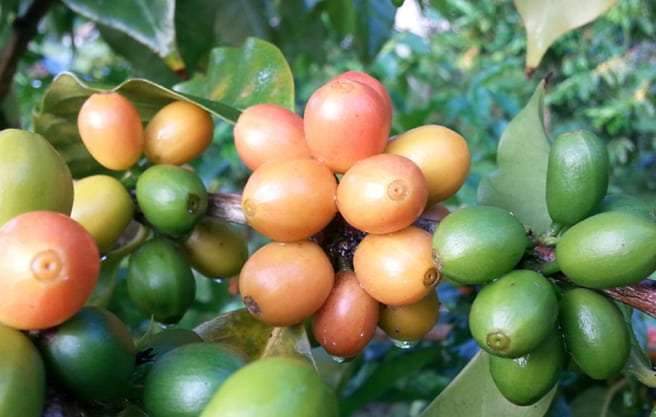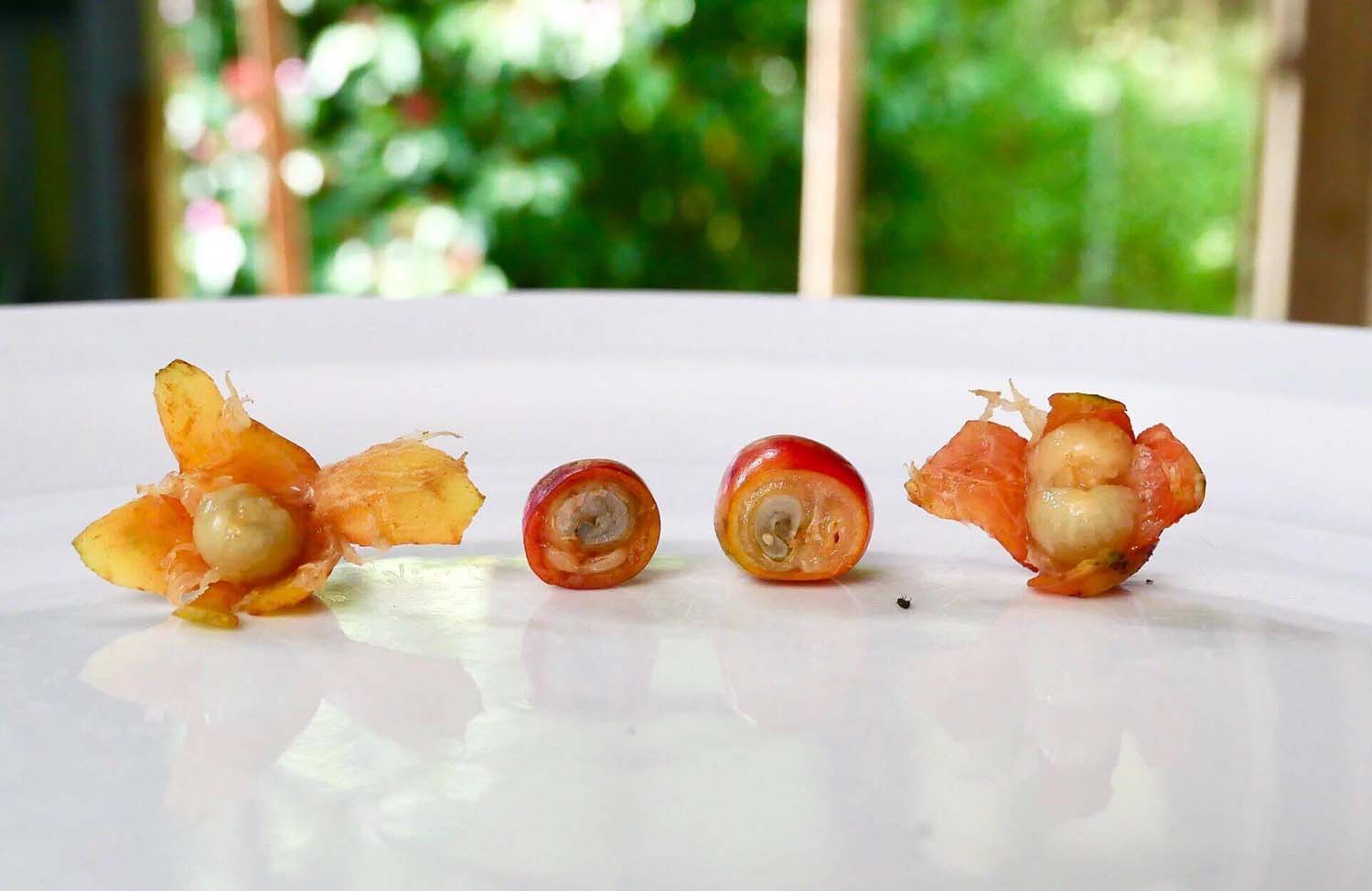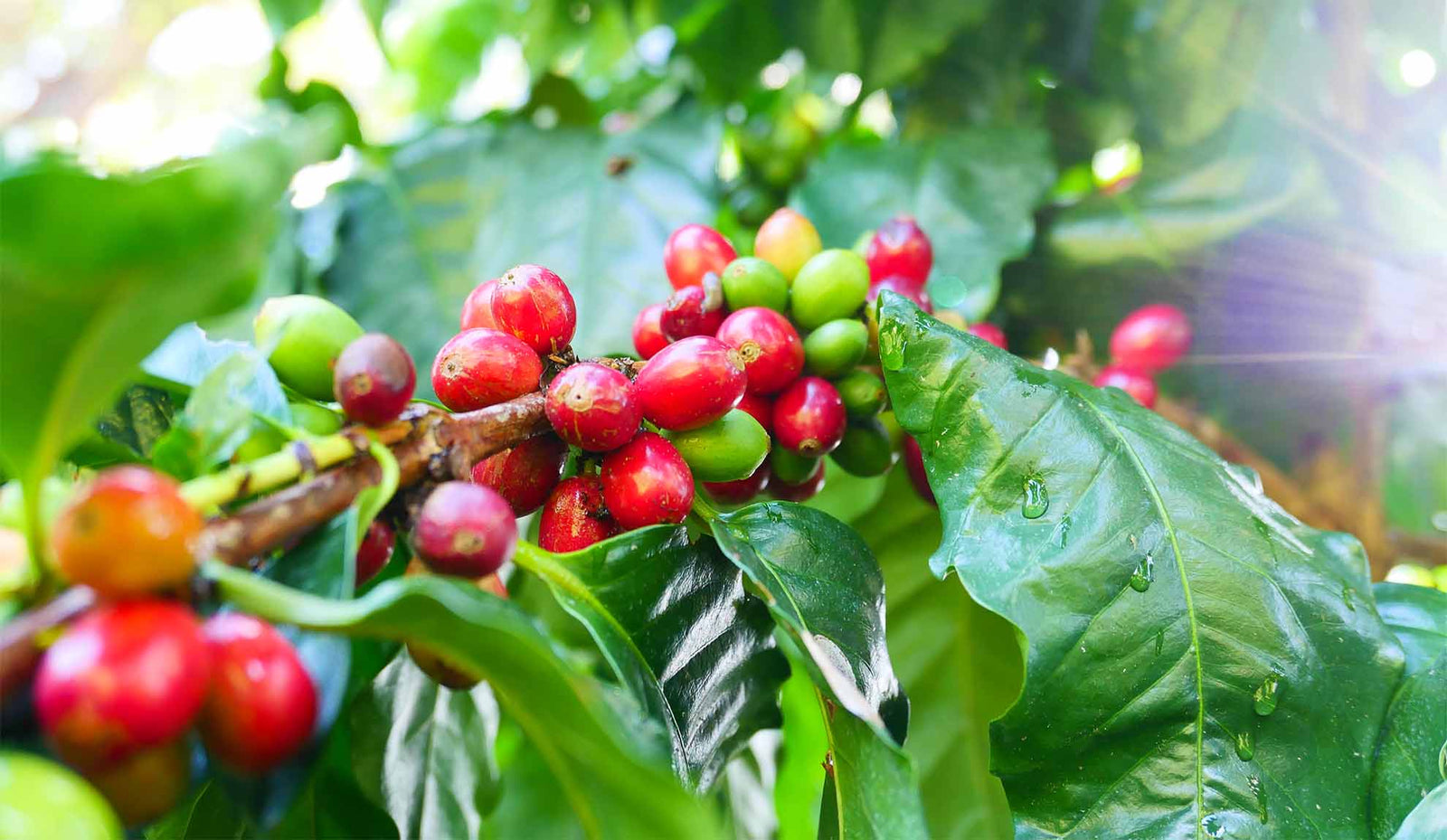Aloha, wild coffee lovers.
Our sincere apologies for being so late. It’s that time of year -- harvest! -- and things get a wee bit crazy-busy. As a part of the Because You Asked blog series, we received this fantastic question a few weeks ago:
"Do the evening rains play an instrumental role, or does it not so much matter when it rains as long as you have the right quantity?” - Bob L.
This is a really big topic, and for Puna coffee lovers it's a pertinent question. We’ll try to break it down.
How much rain do coffee trees need? And how do the rains affect Puna coffee?
In general, coffee thrives with 60 - 90 inches of annual rainfall. Below 30 inches is very stressful and likely to cause low yields of small beans, in addition to compromising the plants’ overall health. Over 120 inches, like the 150 - 200 inches at our farm, can be problematic but the effects are more indirect. Sufficient water availability is wonderful for coffee plants. Depending on the soil conditions and terrain, however, heavy rainfall can lead to erosion, leaching of valuable nutrients, or waterlogged roots which are prone to disease and rot. Even with sufficient drainage and plenty of available food, high precipitation can bring mold and fungus (coffee leaf rust, in particular).
In short, too little water is never a good thing, and the consequences of abundant water can be either detrimental or helpful depending on other environmental factors. For Puna coffee growers, the absence of soil and abundant lava rock is a double-edged sword: the drainage prevents the coffee roots from rotting, but lack of soil water retention can lead the plants to rapid dehydration in periods of drought.
How does the timing of rainfall affect coffee production?
Typical Puna coffee ripening. Punctuated rains can cause various levels of development on a lateral. Sure, it's pretty. But it's also challenging to harvest.
Timing of precipitation is quite crucial. From a macro perspective, the best circumstances provide even rainfall throughout the year with a 1 - 2 month dry period at the end of the harvest season (a period is considered “dry” when rainfall is below half of the average). This dry spell is very important for flowering: it triggers a hormone response in the plant to induce blossoms at the start of the next rain. As you might have guessed, flowering is directly related to fruit set and development. The more consistent the rainfall, the more consistent the harvest period, and the more even the ripening. For example, Kona generally has a routine dry period from December - February. As a result, the coffee harvest window is about 3 - 4 months long and the coffee ripening is relatively even and easy to harvest (compared to harvesting coffee in Puna). In Puna, however, there’s a good deal of precipitation year-round with sporadic dry periods, which means there’s coffee in all stages of development/ripeness throughout much of the year. This scheduling certainly influences overall farming practices that do affect quality: picking at peak ripeness, fertilization regimen, labor efficiency/cost, etc. Just ask our students, harvesting coffee in Puna is a slow, selective process.
How does rainfall affect coffee grades?
Timing is also a major factor in determining bean size. Between 2 - 5 months after flowering, coffee beans grow most rapidly during this phase. Nutrition is very important but growth rate and size is largely a result of rainfall. Areas with higher water availability tend to produce larger beans on average, which is part of the reason why different coffee producing regions may have different standards for sizing (i.e. Hawaii’s largest bean, Extra Fancy, is classified at 19/64 in. diameter, whereas Kenya’s largest, AA, is 17/64 in.). The general rule “bigger is better” is quite relative.
Do evening rains play an instrumental role?
Finally, to address Bob’s question directly regarding evening or daytime rain, there’s no simple answer. Rain tends to bring cooler temperatures. Cooler temperatures slow coffee maturation and, in turn, develop more sweetness, body, acidity, flavor and complexity. So, if there’s more rain, there’s more cloud cover, less sun, less heat and a longer ripening period. There’s one caveat, however: large disparities between day and evening temperatures has demonstrated to enhance coffee sweetness and flavor. So, it’s fair to say that if days are hot and sunny, cool and rainy afternoons and evenings will bestow benefits to overall quality even if the overall average temperature is higher than another region. Comparing Kona and Puna coffee regions illustrates this quite well. Kona is warmer than Puna on average but the weather is quite conducive to high quality coffee in part because of afternoon and evening rains. As we’ve demonstrated, Puna’s cool, temperate climate lends to very high quality coffee as well. Both regions can produce exceptional coffee but their environmental conditions do so in disparate ways.
Thanks again for submitting the good question, Bob!
Please email comments, questions, and suggestions to kelleigh (at) bigislandcoffeeroasters.com
References
Puna, Hawaii - Wikipedia
Coffee: Growing, Processing, Sustainable Production




